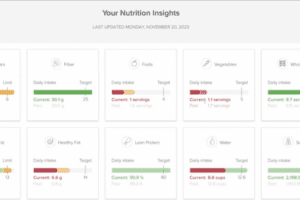Last week I had my eyes opened to the issue of EHRs in medical education at the #eHealth2017 conference in Toronto. Prior to last week, I had assumed medical schools in North America had incorporated EHRs into their curriculums a long time ago. I learned my lesson (excuse the pun) after attending a breakout session on the use of #HealthIT in medical education.
Lynn Nagel RN, PhD, assistant professor at the University of Toronto in nursing, gave me my first shock when she told the story of how no one raised their hands when she asked her final-year nursing class who had used an actual EHR before. My jaw hit the floor. This would be akin to a class of accountants who had never used a spreadsheet before or computer science majors who had never used a tablet before.
Nagel was not surprised to learn that there simply wasn’t any room for EHR training in the nursing school’s curriculum. Plus, there was a belief by the professors that the healthcare institutions would train these newly minted nurses how to use their EHR.
Later in the session Gurprit Randhawa, Manager of EHR Adoption, Use, Research & Development at Island Health in Victoria BC, told the story of recently graduated physicians who had been given minimal exposure to EHRs (less than 5hrs total).
Sad to read the 2nd line of this slide – very few undergrad students get exposure to #EHRs #eHealth2017 #hcldr pic.twitter.com/ZU2bsxLGiq
— Colin Hung (@Colin_Hung) June 6, 2017
Randhawa spoke about how she watched these new graduates struggle with actual patient encounters – not knowing whether to face the screen or the patient or both. The new physicians also did not know what to enter in the various fields and were confused over what to record in their clinical notes. Randhawa elicited a round of laughter when she talked about one physician who complained that he thought EHRs all came with a Siri-like interface so that doctors could just dictate their notes to the system.
Later in her presentation Randhawa spoke about how the institution eventually adopted an EHR to help acclimate medical students to the “real world”. They chose an EHR based on the US Vista system and it was well received by medical students.
80% of students reported that the eduEHR added value to their education. #eHealth2017 #hcldr #HITsm pic.twitter.com/yiHRKup08X
— Colin Hung (@Colin_Hung) June 6, 2017
Randhawa made specific mention of how lucky the medical school was in their choice of EHR. Not only did the vendor provide reliable technical support to the school’s IT department, they also took support calls from students free of charge (and often in the middle of the night before an assignment was due).
Cost, maintenance and support for the EHR are significant considerations for educational institutions, especially given their limited IT resources. Implementing a fully functional EHR is simply not an option.
In the Q&A scrum at the end of the breakout session, I listened to a former medical professor (now consultant) talk about the early days of EHRs and how they used the production system from their institution’s medical center to teach students. Although this provided the advantage of being “real-world”, it was difficult to find actual patient use-cases that matched the clinical criteria they were attempting to teach – partly because EHRs at the time lacked adequate search tools. This professor also mentioned how some of the health records used in class were a bit “too real” as the notes were rife with spelling mistakes, dosages in the notes that didn’t match actual prescribed medications and sometimes personal comments from the attending physicians.
Using actual patient data in an educational setting also raised privacy concerns. I can imagine that in some cases, patients were not made aware that their data could be used in this fashion.
In 2014 a study was published in the American Journal of Medicine that tracked 3rd year medical students and their use of EHRs. The study concluded that there was no correlation between EHR usage and academic performance, however, the early exposure to EHRs was deemed to influence attitudes and habits related to the technology as the students became physicians.
Despite the potential impact of the EHR on educational outcomes, no correlation could be identified between EHR use and clerkship performance. These findings suggest that EHR use habits may be learned early in medical training and certain specialties are more prone to increased screen time. More attention should be directed towards the interface between medical students and the EHR. Their experiences with the EHR during these earlier stages of training are likely to influence attitudes and habits later on as physicians.
One interesting solution to the educational EHR challenge is the Regenstrief EHR Clinical Learning Platform which features more than 11,000 clinically accurate but misidentified medical records. This EHR is the result of a collaboration between the Regenstrief Institute (associated with the Inidana University School of Medicine) and the American Medical Association. This EHR is designed specifically for the education of students.
As with everything in healthcare, the use of EHRs in medical education is a multi-faceted challenge. Although the answer seems obvious (teaching EHRs help prepare students for the reality of healthcare), the implementation of the solution is not straight-forward. Will the vendor support educational institutions and the students themselves? Will the cost to install and maintain the education EHR be within the means of the institution? Will the EHR itself be easy enough for students to use?
That last question was the most memorable moment of the #eHealth2017 breakout session. At the end of Randhawa’s presentation she flashed up a slide with student reactions to using an EHR as part of their course. Take a look at the comment on the right.
Funny quote from undergrad student using an eduEHR – “It was a horrible experience,but in a good way” #eHealth2017 cc #hcldr #HITsm pic.twitter.com/ZlahoTKAvU
— Colin Hung (@Colin_Hung) June 6, 2017
Since the goal of education is to prepare students for the real world, a sub-optimal EHR experience is about as real-world as it gets.













